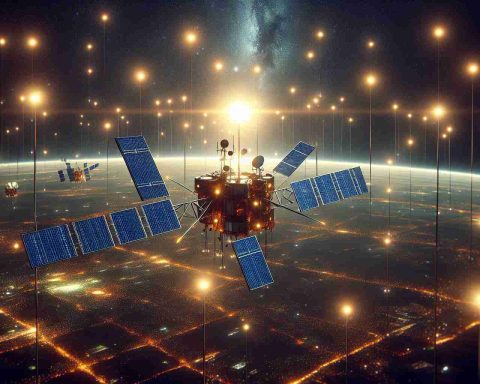Scientists are closely monitoring Mount Spurr in Alaska, as the volcano has recently shown increased seismic activity—a potential precursor to an eruption. Located about 80 miles west of Anchorage, Mount Spurr’s last major eruption was in 1992, which sent ash plumes soaring into the sky, disrupting air travel and blanketing nearby areas in ash.
Advancements in seismology and real-time monitoring technologies are providing scientists with unprecedented tools to assess volcanic hazards. The Alaska Volcano Observatory (AVO) has been instrumental in keeping watch over Mount Spurr. Utilizing a network of seismic stations, GPS, and satellite-based imaging technology, AVO is at the forefront of pioneering efforts to anticipate volcanic activity better.
In a landscape where traditional methods relied heavily on visual observations, today’s experts are leveraging machine learning algorithms to analyze seismic data in real-time. These advanced systems are designed to detect subtle changes in seismic patterns, potentially offering earlier warnings of an eruption. However, predicting the exact timing and magnitude remains a challenge, underscoring the critical need for continued research and investment in volcanic monitoring technology.
While there is no immediate threat, the recent uptick in seismic activity serves as a timely reminder of nature’s volatile potential. Communities in proximity to Mount Spurr are advised to stay informed through AVO updates and to be prepared for possible evacuations. As technology continues to evolve, the hope is that scientists will become increasingly adept at decoding the earth’s hidden signals, reducing the risks associated with volcanic eruptions.
Revolutionizing Volcanic Monitoring: The Role of AI and Innovative Technologies at Mount Spurr
As Mount Spurr in Alaska indicates signs of heightened seismic activity, scientists are harnessing cutting-edge technology to better predict volcanic eruptions. These developments could revolutionize how we understand and anticipate volcanic hazards, offering potential for safer communities and minimized disruption.
Innovations in Seismic Monitoring Technology
The Alaska Volcano Observatory (AVO), a pivotal entity in volcanic research, utilizes a sophisticated array of tools to monitor Mount Spurr. Foremost among these are innovations in seismology that marry traditional observational methods with state-of-the-art technologies. The deployment of seismic stations, GPS, and satellite imaging provides a comprehensive monitoring system. This multi-pronged approach allows for consistent data collection, essential for accurate assessment.
The Integration of Machine Learning Algorithms
A particularly exciting advancement is the use of machine learning algorithms to analyze seismic data. These algorithms can detect subtle, yet significant, shifts in seismic patterns. By processing vast quantities of data quickly, machine learning offers potential for earlier eruption warnings. Despite the power of these algorithms, however, analysts must contend with their limitations—chiefly, the challenge of predicting precise timing and magnitude of eruptions.
Ongoing Research and Technological Investment
The integration of advanced technologies underscores the need for ongoing research and financial investment in volcanic monitoring. As analytical tools become increasingly refined, there is hope that scientists will decode more of Earth’s geological signals, improving the accuracy of eruption predictions.
Implications for Local Communities
While the increased seismic activity at Mount Spurr does not imply an immediate threat, it serves as a critical reminder for nearby communities to stay informed and prepared. Real-time updates from the AVO are essential for emergency preparedness, with potential measures including evacuation plans should a significant eruption occur.
Future Trends and Predictions
The trajectory of technological improvements in volcanic monitoring is promising. As we look to the future, we can anticipate more effective prediction models that leverage artificial intelligence and enhanced imaging technologies to mitigate risks associated with volcanic eruptions. Such advances aim not only to protect human life but also to preserve the ecological balance of the affected regions.
By remaining at the forefront of innovation, agencies like the AVO are not only safeguarding the present but also fortifying the future against the unpredictability of volcanic activity. For more about the advancements in volcanic research and monitoring, visit US Geological Survey.








